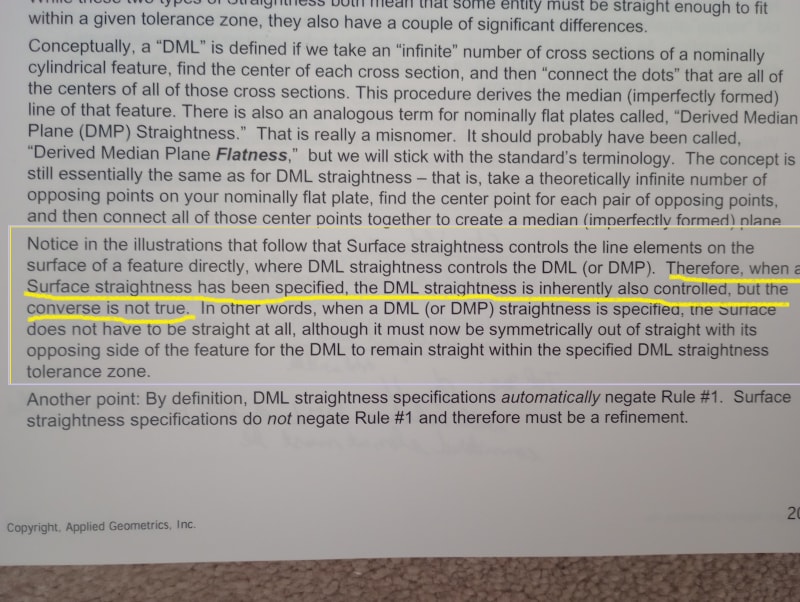Do you find these statements ambiguous or incorrect?
When a surface flatness has been specified, the DMP flatness is inherently also controlled, but the converse is not true. In other words, when a DMP Flatness is specified, the surface does not have to be flat at all, although it must now be symmetrically out of flatness with its opposing side of the feature for the derived median plane to remain flat within the specified DMP flatness tolerance zone.
I am questioning the validity of those statements "When a surface flatness has been specified, the DMP flatness is inherently also controlled."
If one surface is controlled within (lets say an example) 0.2 tolerance (for a block defined with plus-minus dimension, 20±2) should I understand that the DMPF should be also smaller than 0.2?
Or both sides of the block shall have their flatness smaller than 0.2 and then ( and only then) the DMPF is controlled within 0.2?
What is your understanding?
When a surface flatness has been specified, the DMP flatness is inherently also controlled, but the converse is not true. In other words, when a DMP Flatness is specified, the surface does not have to be flat at all, although it must now be symmetrically out of flatness with its opposing side of the feature for the derived median plane to remain flat within the specified DMP flatness tolerance zone.
I am questioning the validity of those statements "When a surface flatness has been specified, the DMP flatness is inherently also controlled."
If one surface is controlled within (lets say an example) 0.2 tolerance (for a block defined with plus-minus dimension, 20±2) should I understand that the DMPF should be also smaller than 0.2?
Or both sides of the block shall have their flatness smaller than 0.2 and then ( and only then) the DMPF is controlled within 0.2?
What is your understanding?

